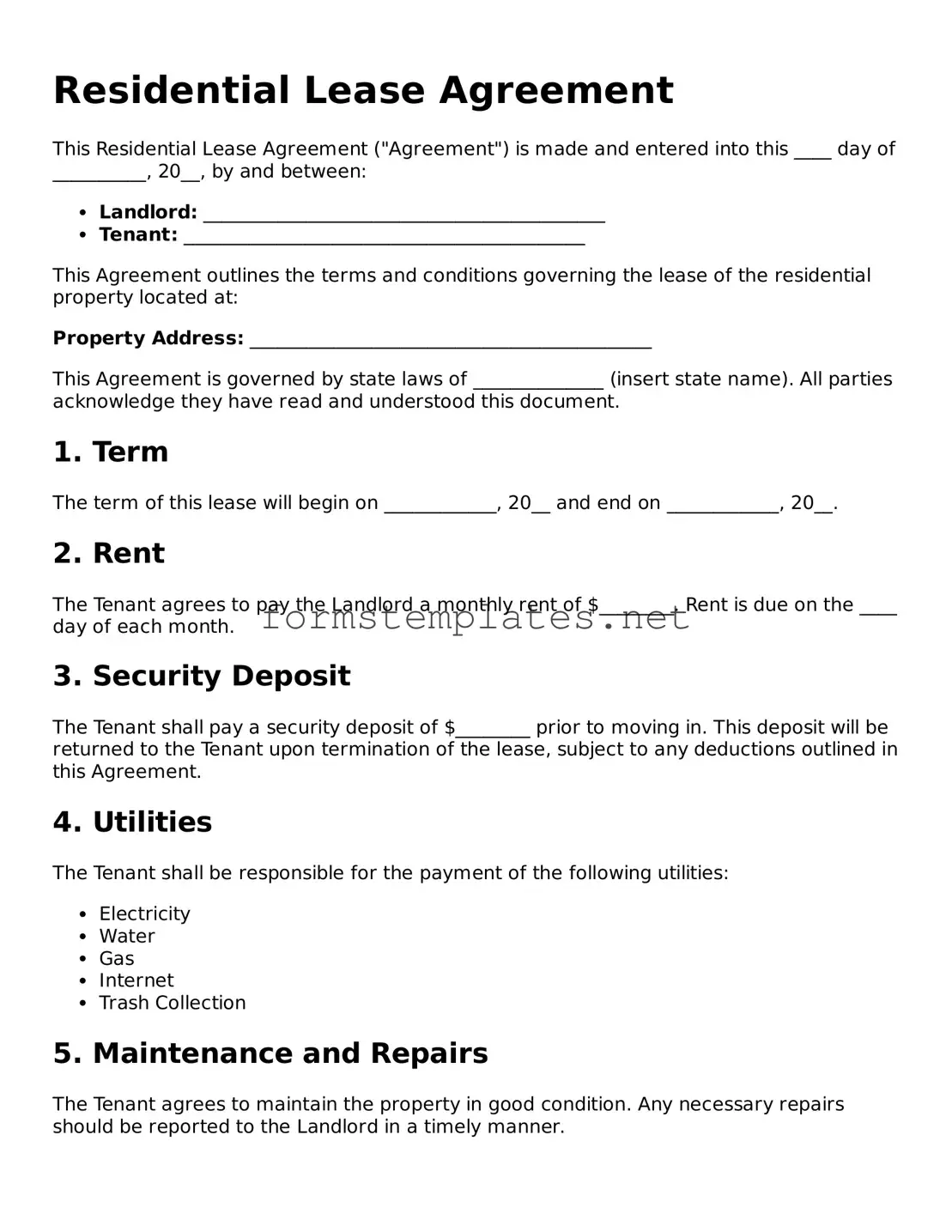Residential Lease Agreement
This Residential Lease Agreement ("Agreement") is made and entered into this ____ day of __________, 20__, by and between:
- Landlord: ___________________________________________
- Tenant: ___________________________________________
This Agreement outlines the terms and conditions governing the lease of the residential property located at:
Property Address: ___________________________________________
This Agreement is governed by state laws of ______________ (insert state name). All parties acknowledge they have read and understood this document.
1. Term
The term of this lease will begin on ____________, 20__ and end on ____________, 20__.
2. Rent
The Tenant agrees to pay the Landlord a monthly rent of $________. Rent is due on the ____ day of each month.
3. Security Deposit
The Tenant shall pay a security deposit of $________ prior to moving in. This deposit will be returned to the Tenant upon termination of the lease, subject to any deductions outlined in this Agreement.
4. Utilities
The Tenant shall be responsible for the payment of the following utilities:
- Electricity
- Water
- Gas
- Internet
- Trash Collection
5. Maintenance and Repairs
The Tenant agrees to maintain the property in good condition. Any necessary repairs should be reported to the Landlord in a timely manner.
6. Alterations
The Tenant shall not make any alterations to the property without obtaining prior written consent from the Landlord.
7. Termination
Either party may terminate this Agreement by providing written notice ____ days in advance. The notice may be delivered in person or sent via certified mail.
8. Governing Law
This Agreement shall be governed by the laws of ______________ (insert state name).
By signing below, both parties agree to adhere to the terms outlined in this Residential Lease Agreement.
- Landlord Signature: _____________________________________ Date: ________________
- Tenant Signature: _______________________________________ Date: ________________
